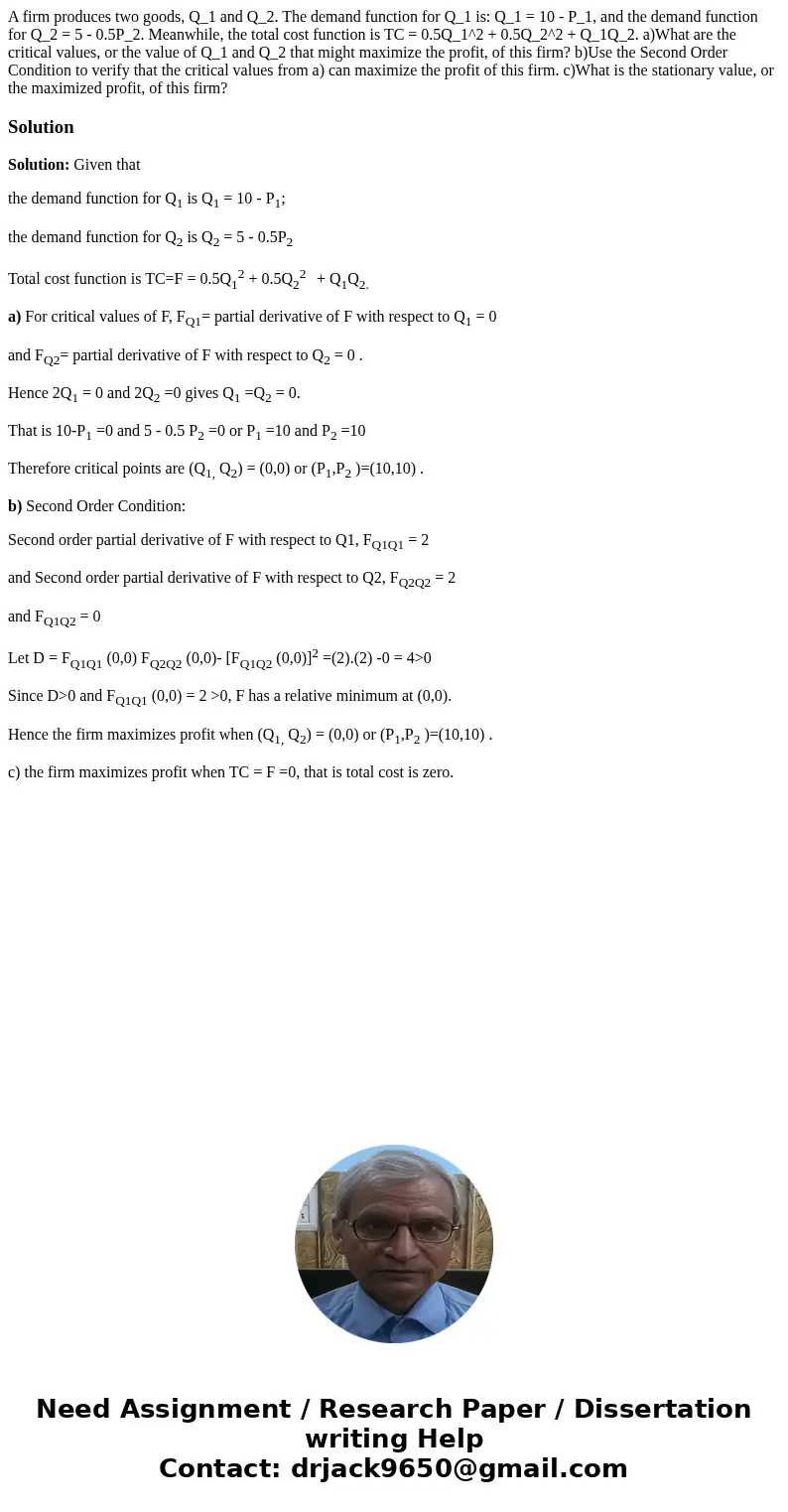A firm produces two goods Q1 and Q2 The demand function for
Solution
Solution: Given that
the demand function for Q1 is Q1 = 10 - P1;
the demand function for Q2 is Q2 = 5 - 0.5P2
Total cost function is TC=F = 0.5Q12 + 0.5Q22 + Q1Q2.
a) For critical values of F, FQ1= partial derivative of F with respect to Q1 = 0
and FQ2= partial derivative of F with respect to Q2 = 0 .
Hence 2Q1 = 0 and 2Q2 =0 gives Q1 =Q2 = 0.
That is 10-P1 =0 and 5 - 0.5 P2 =0 or P1 =10 and P2 =10
Therefore critical points are (Q1, Q2) = (0,0) or (P1,P2 )=(10,10) .
b) Second Order Condition:
Second order partial derivative of F with respect to Q1, FQ1Q1 = 2
and Second order partial derivative of F with respect to Q2, FQ2Q2 = 2
and FQ1Q2 = 0
Let D = FQ1Q1 (0,0) FQ2Q2 (0,0)- [FQ1Q2 (0,0)]2 =(2).(2) -0 = 4>0
Since D>0 and FQ1Q1 (0,0) = 2 >0, F has a relative minimum at (0,0).
Hence the firm maximizes profit when (Q1, Q2) = (0,0) or (P1,P2 )=(10,10) .
c) the firm maximizes profit when TC = F =0, that is total cost is zero.

 Homework Sourse
Homework Sourse